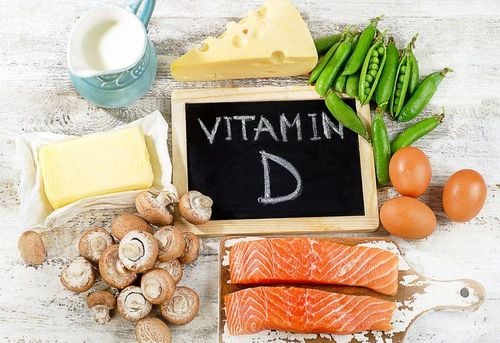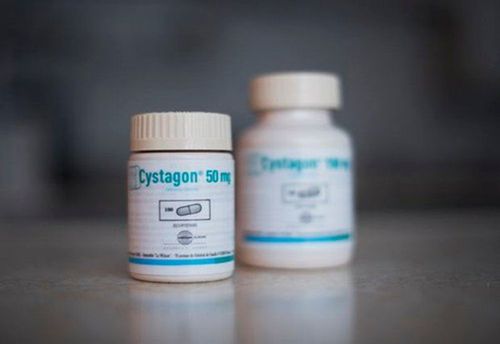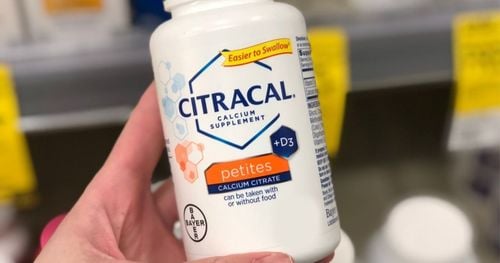This is an automatically translated article.
Posted by MSc.BSCKI Vo Khac Khoi Nguyen - Department of General Surgery - Vinmec Central Park International General Hospital.Not just a common vitamin, Vitamin D is also known as an important "material" in promoting and maintaining bone and body health. Currently, vitamin D deficiency has become a worldwide public health problem and its prevalence increases with age and especially among office workers due to sedentary lifestyles and limited exposure to sunlight. sunlight due to working indoors.
Vitamin D deficiency increases the risk of osteomalacia, osteoporosis, and fractures. Not only that, studies show that: Vitamin D deficiency is associated with many diseases such as cardiovascular disease, type I and type II diabetes, dyslipidemia, chronic kidney disease, and other diseases. causes of fibrosis, tuberculosis, infectious diseases, cancer, .... Even vitamin D deficiency is associated with overall mortality in adults.
So where does the body get vitamin D from?
There are two main sources of Vitamin D for the human body:From the sun (endogenous) From the diet (exogenous) Sunshine helps the body produce Vitamin D3, while food Provides the body with Vitamin D2. The main source of Vitamin D is synthesis in the skin under the influence of solar ultraviolet B (UV-B) radiation accounting for 80-90% and about 10-20% due to diet.
Sunshine is the main source of Vitamin D for adults and children. Sunbathing the whole body for 10-15 minutes in the middle of the day in the summer or in the sun until the skin turns red is equivalent to providing 15,000 units of Vitamin D (cholecalciferol). On that basis, sunbathing on the face, hands and hands for 5-15 minutes, 4-6 times per week is also effective in producing Vitamin D for the body. Some notes that you should know when sunbathing:
Sunlight must shine directly on the skin and not be blocked by sunscreen, glasses and plastic products because sunscreen with an SPF factor above 30 reduces it synthesizes vitamin D in the skin over 95% People with naturally dark skin tones have natural sun protection and need 3-5 times longer sun exposure to produce the same amount of vitamin D as a person of color white. The amount of vitamin D that is synthesized depends on many factors such as the season of the year, changes in latitude, skin pigmentation, use of sunshades, clothing, and age. Diet Unlike Calcium, Vitamin D is only found in a few foods such as North Sea salmon, herring, mackerel, and some other fatty fish. In addition, Vitamin D is also found in liver, eggs and low-fat dairy products. Thus, to get enough Vitamin D not only from food alone, but also with supplements and sunbathing.

Các nguồn bổ sung Vitamin D
Safe and necessary way to supplement Vitamin D
Many people think that vitamin D is provided through the diet alone and does not need to be exposed to the sun due to fear of burning, blackening and cancer. However, this assumption is completely wrong.With the exception of fatty fish, the vitamin D content of most foods, including fortified dairy products, is relatively low, not enough for the body's daily needs. Although there are many supplements on the market today with Vitamin D2 (ergocalciferol) and D3 (cholecalciferol) on the market, being completely dependent on functional foods is something doctors recommend not to do.
According to Master of BSCK I Vo Khac Khoi Nguyen, Doctor of Orthopedic Surgery, Vinmec Central Park General Hospital: in addition to a reasonable diet, sunbathing is also an important habit in vitamin D supplementation. , it is necessary to screen for vitamin D deficiency in high-risk subjects such as office workers, the elderly, people with dark skin, and obesity. Just measure the concentration of Vitamin D in the blood, the doctor will assess the level of deficiency and have an effective vitamin D supplement plan. From there, it can help you prevent diseases related to vitamin D deficiency: bone fractures, muscle weakness, cardiovascular disease, diabetes, viral infections, even depression.














